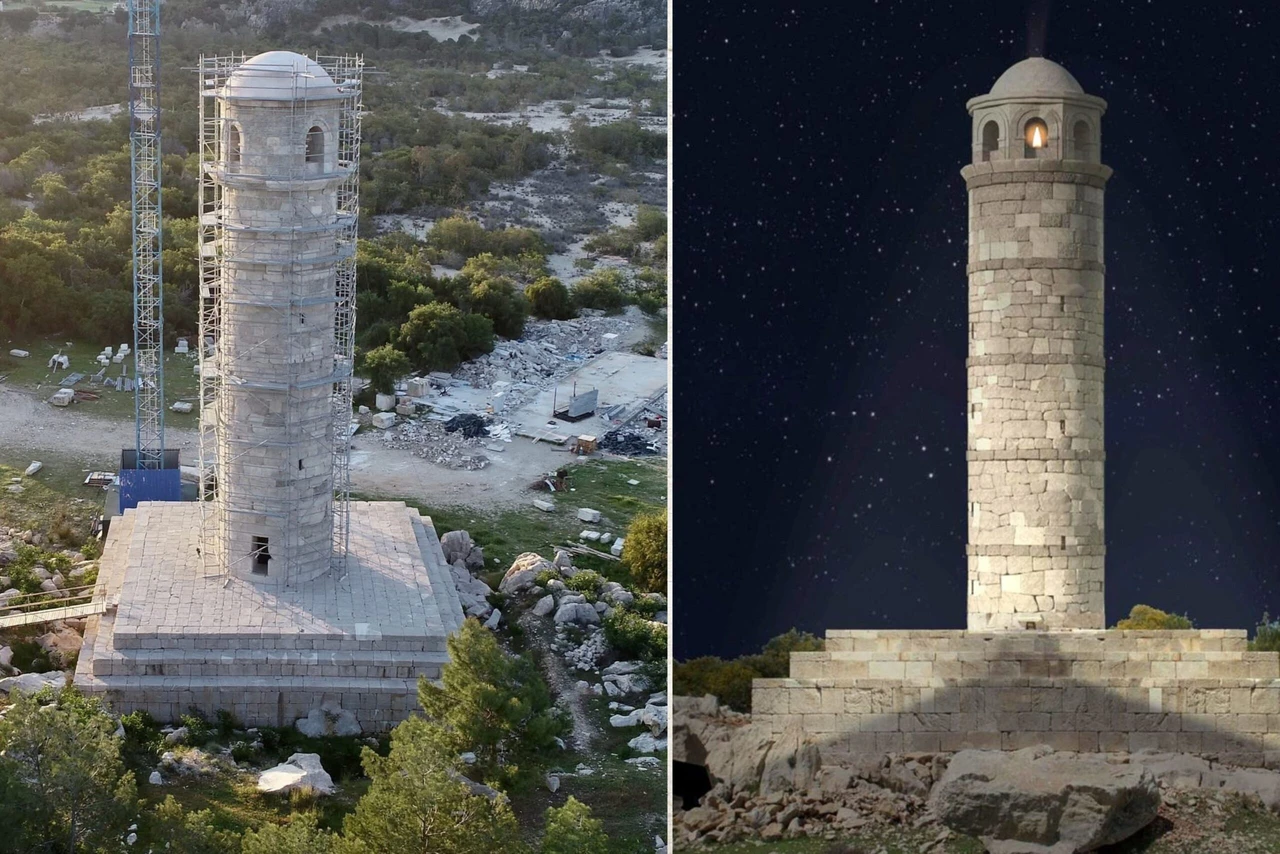Santorini volcano’s victims, ancient ash, tsunami traces discovered in Türkiye
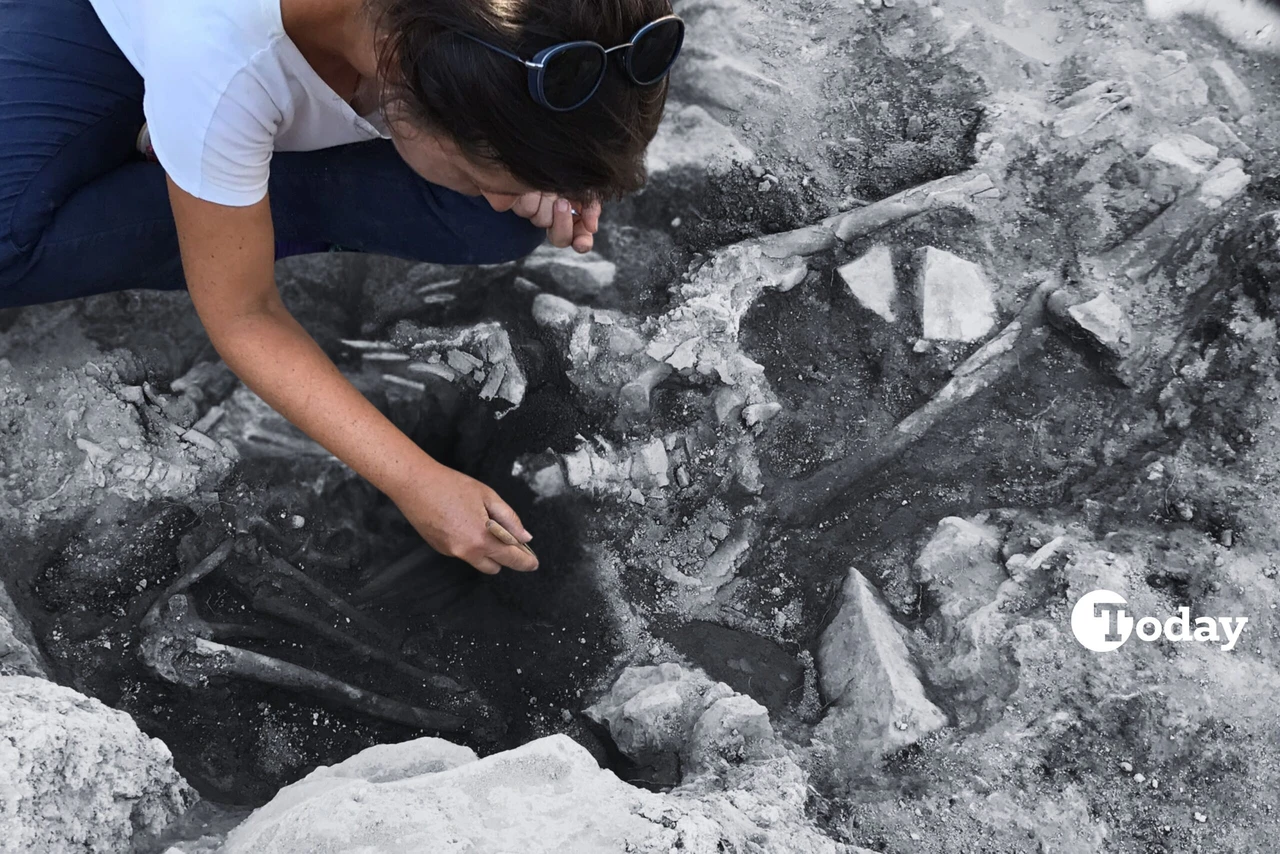 A female archaeologist excavating a human skeleton amidst tsunami debris at the Cesme-Baglarbasi archaeological site in Türkiye. (Photo via PNAS)
A female archaeologist excavating a human skeleton amidst tsunami debris at the Cesme-Baglarbasi archaeological site in Türkiye. (Photo via PNAS)
For the first time, traces of the deadly eruption of the Santorini volcano approximately 3,500 years ago and its victims, along with volcanic ash, have been uncovered on Türkiye’s Aegean coast. These findings reveal the catastrophic impact of the eruption and its aftermath, providing new insights into one of the largest natural disasters of the Bronze Age.
Archaeological excavations in Cesme-Baglararasi, Türkiye, have revealed groundbreaking evidence of massive tsunamis triggered by the catastrophic eruption of the Santorini volcano approximately 3,500 years ago. The discovery, published in the prestigious Proceedings of the National Academy of Sciences (PNAS), in 2022, includes the skeletal remains of a young man—potentially the first known human victim of this devastating natural disaster.
The study, conducted by an international team led by Professor Vasif Sahoglu from Ankara University and Beverly Goodman-Tchernov from Haifa University, sheds new light on the magnitude of the Thera (Santorini) eruption’s impact on the Aegean region. The findings challenge previous assumptions and suggest that the destruction caused by the volcanic event was far more extensive than previously believed.
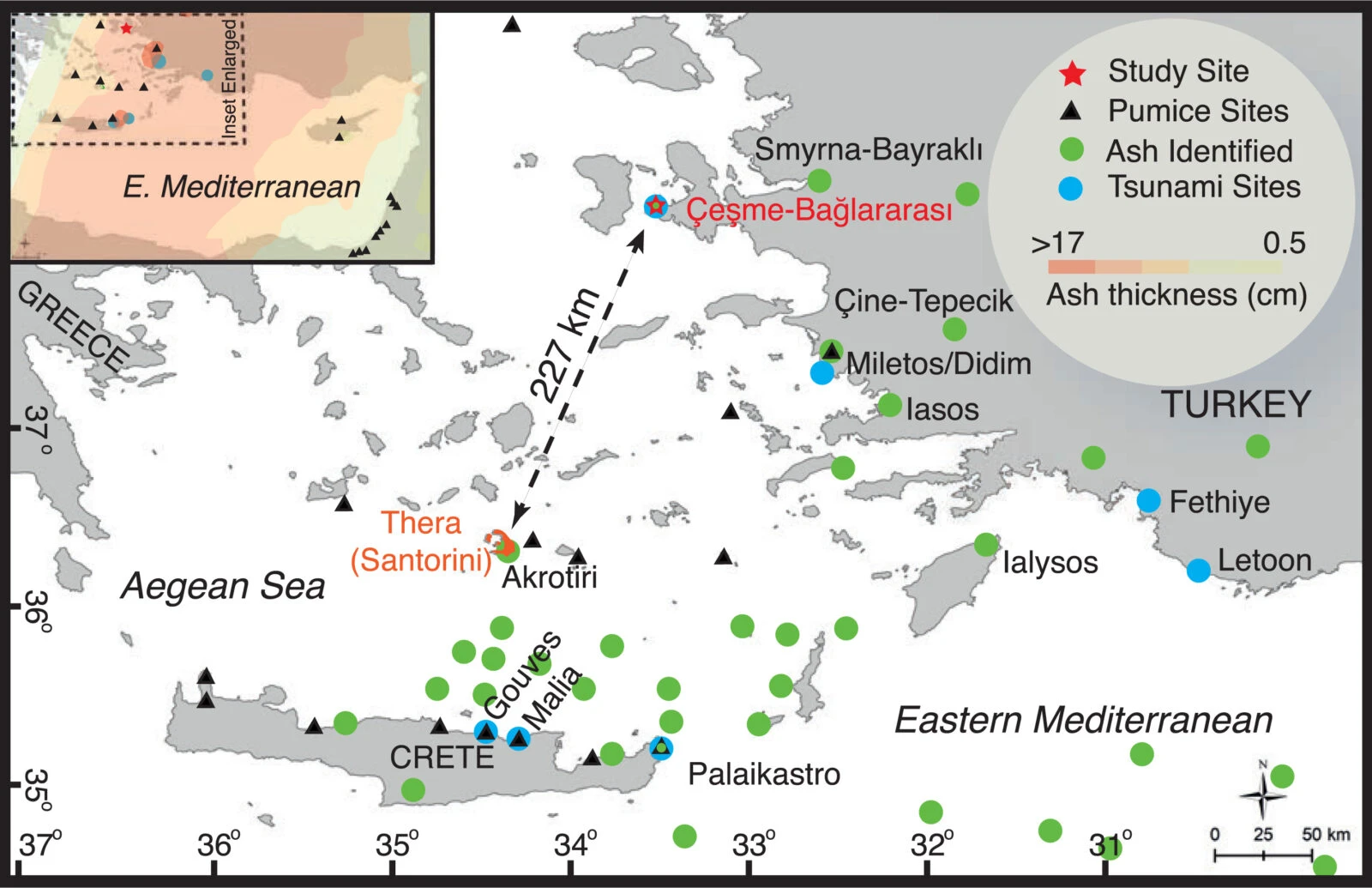
Eruption of Santorini volcano: Catastrophe that reshaped Mediterranean
The eruption of the Santorini volcano, one of the largest volcanic events in human history, is thought to have caused widespread devastation across the Eastern Mediterranean. Volcanic ash and tsunami waves reached as far as Türkiye’s Aegean coast, leaving behind layers of sediment that have now been uncovered at the Cesme-Baglararasi excavation site.
Radiocarbon dating of volcanic ash and tsunami deposits suggests that the Thera eruption could not have occurred before 1,612 B.C.—a crucial insight that may help refine the chronology of the Late Bronze Age.
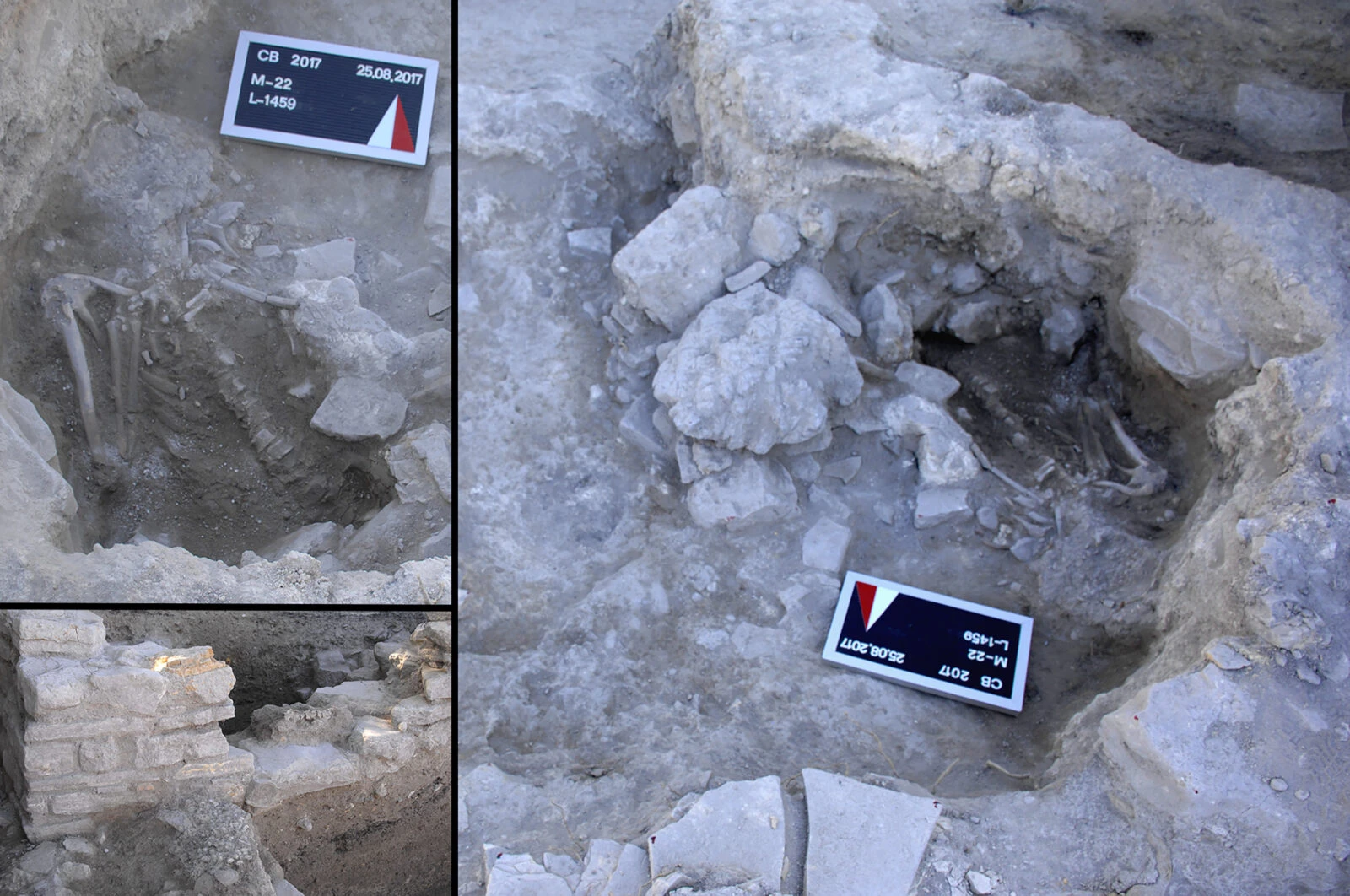
First-ever human remains linked to Thera tsunami
Among the most striking discoveries is the skeletal remains of a young man, unearthed beneath layers of tsunami deposits. The positioning of the body suggests that survivors may have attempted to search for missing individuals after the disaster, digging makeshift burial pits that were later filled by subsequent tsunami waves.
This find marks the first direct archaeological evidence of a human fatality linked to the Eruption of the Santorini volcano, providing a haunting glimpse into the catastrophic toll of the event. Alongside the human remains, the excavation also uncovered the skeleton of a dog, further highlighting the deadly impact of the disaster.
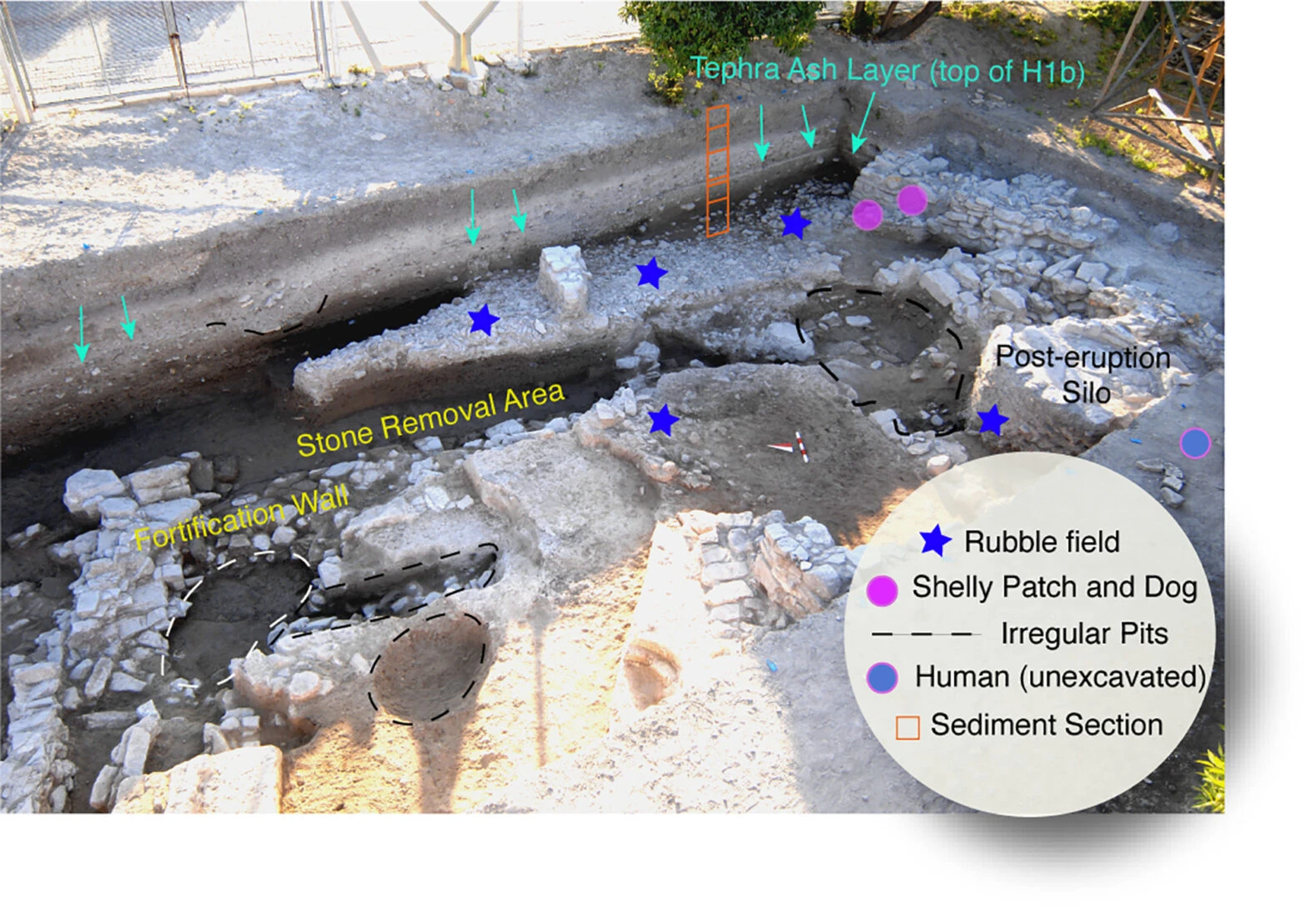
Cesme-Baglararasi: A thriving port city wiped out
The archaeological evidence indicates that Cesme-Baglararasi was a prosperous port settlement in the second millennium B.C., playing a significant role in maritime trade between Anatolia and Minoan Crete. However, the Thera-triggered tsunamis appear to have completely wiped out the settlement, leading to a hiatus in habitation for at least a century.
Until now, many scholars believed that no human remains had been discovered from the Eruption of the Santorini volcano because inhabitants of Santorini may have fled the island before the main explosion. However, the Cesme-Baglararasi discoveries prove that at least some people were caught in the catastrophe, providing a crucial missing piece in the historical puzzle of the disaster.
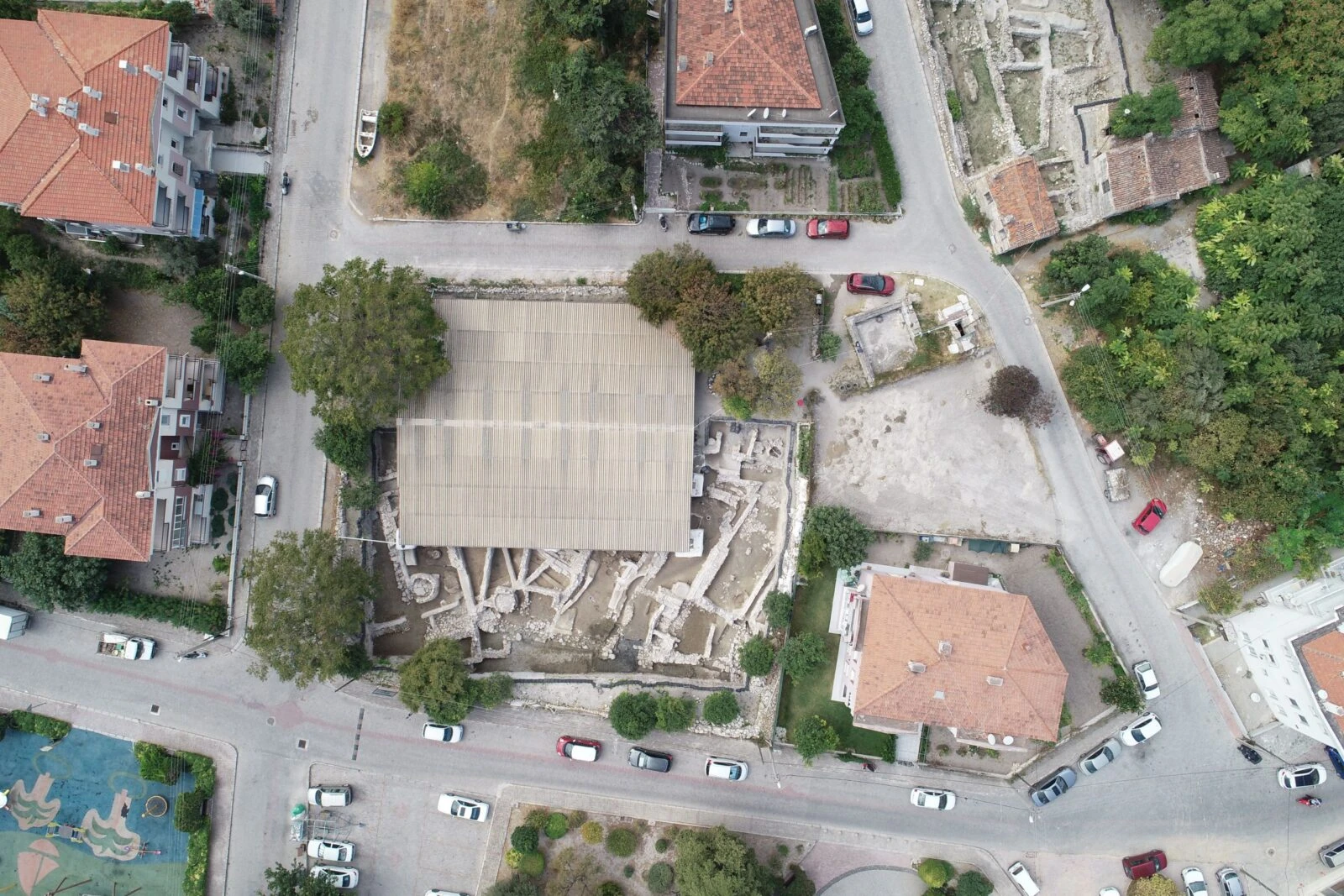
A multidisciplinary effort reveals true scale of disaster
This groundbreaking research, conducted in collaboration with scientists from Türkiye, Austria, and Israel, utilized archaeology, geophysics, and geological analysis to reconstruct the sequence of events. The findings confirm that northern Aegean coastal settlements were not only affected by volcanic ash but also suffered from powerful tsunamis—a previously unproven theory.
The Cesme-Baglararasi excavations, carried out between 2009 and 2019 under the authorization of Türkiye’s Ministry of Culture and Tourism, are part of the Izmir Regional Excavation and Research Project (IRERP). The site has yielded rich evidence of Anatolian-Minoan interactions, further solidifying its importance in Late Bronze Age history.
Rewriting history of Aegean Bronze Age
The discoveries at Cesme-Baglararasi provide a new perspective on the scale of destruction caused by the Thera eruption.
As further research continues, archaeologists anticipate that similar evidence may be uncovered at other settlements along the Aegean coast.


